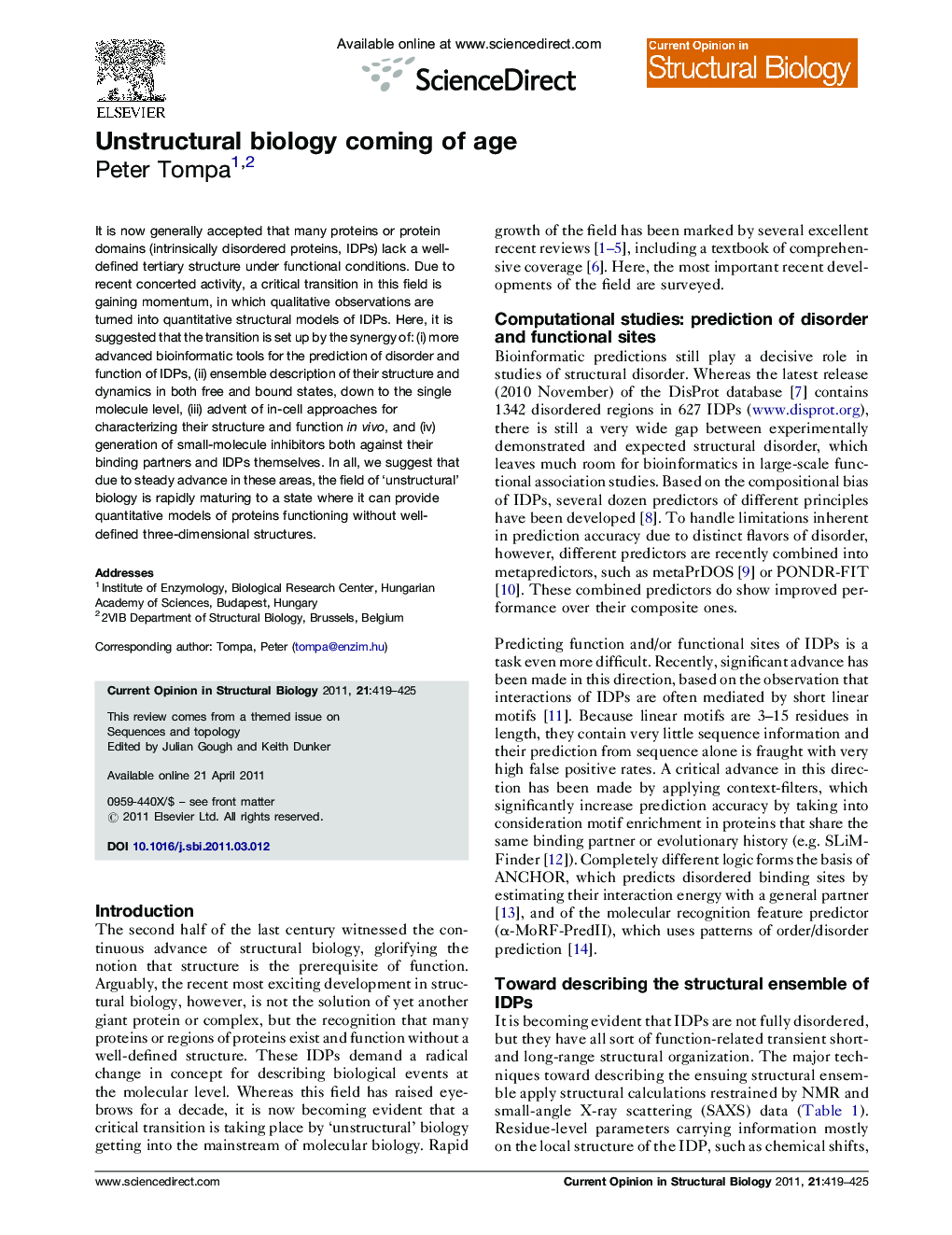| Article ID | Journal | Published Year | Pages | File Type |
|---|---|---|---|---|
| 1979161 | Current Opinion in Structural Biology | 2011 | 7 Pages |
It is now generally accepted that many proteins or protein domains (intrinsically disordered proteins, IDPs) lack a well-defined tertiary structure under functional conditions. Due to recent concerted activity, a critical transition in this field is gaining momentum, in which qualitative observations are turned into quantitative structural models of IDPs. Here, it is suggested that the transition is set up by the synergy of: (i) more advanced bioinformatic tools for the prediction of disorder and function of IDPs, (ii) ensemble description of their structure and dynamics in both free and bound states, down to the single molecule level, (iii) advent of in-cell approaches for characterizing their structure and function in vivo, and (iv) generation of small-molecule inhibitors both against their binding partners and IDPs themselves. In all, we suggest that due to steady advance in these areas, the field of ‘unstructural’ biology is rapidly maturing to a state where it can provide quantitative models of proteins functioning without well-defined three-dimensional structures.
► Intrinsically disordered proteins are prevalent and important. ► The conformational ensemble of disordered proteins can be described. ► In-cell approaches enable to study their structure and function in live cells. ► Small-molecule drug candidates can inhibit disordered proteins. ► Their detailed characterization opens the new era of ‘unstructural’ biology.
